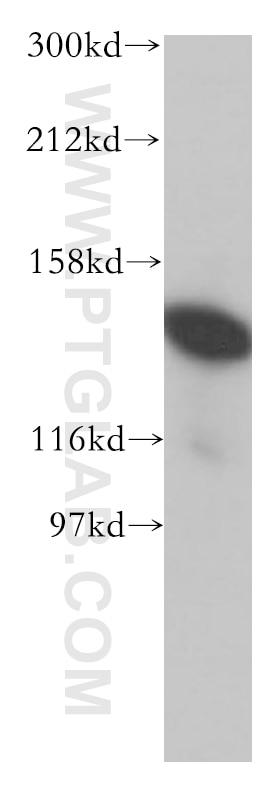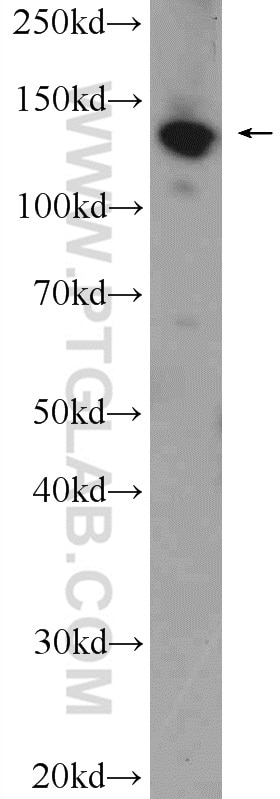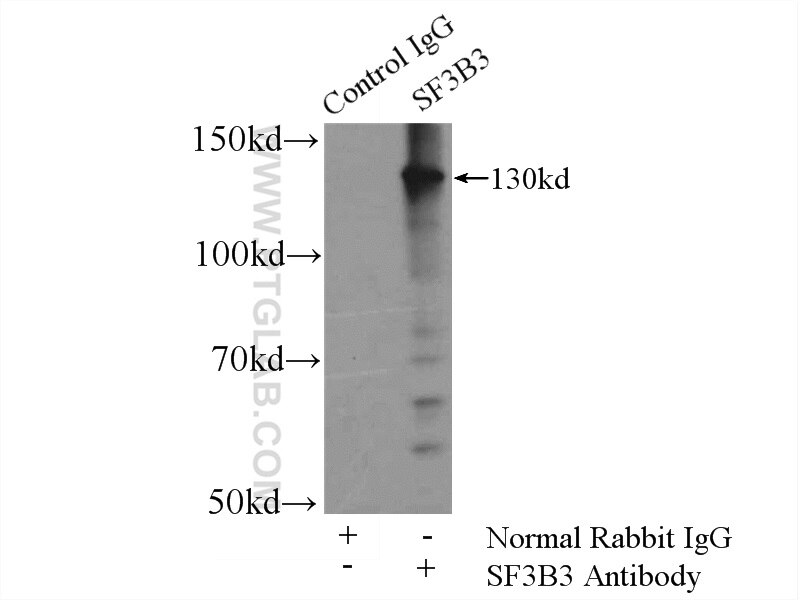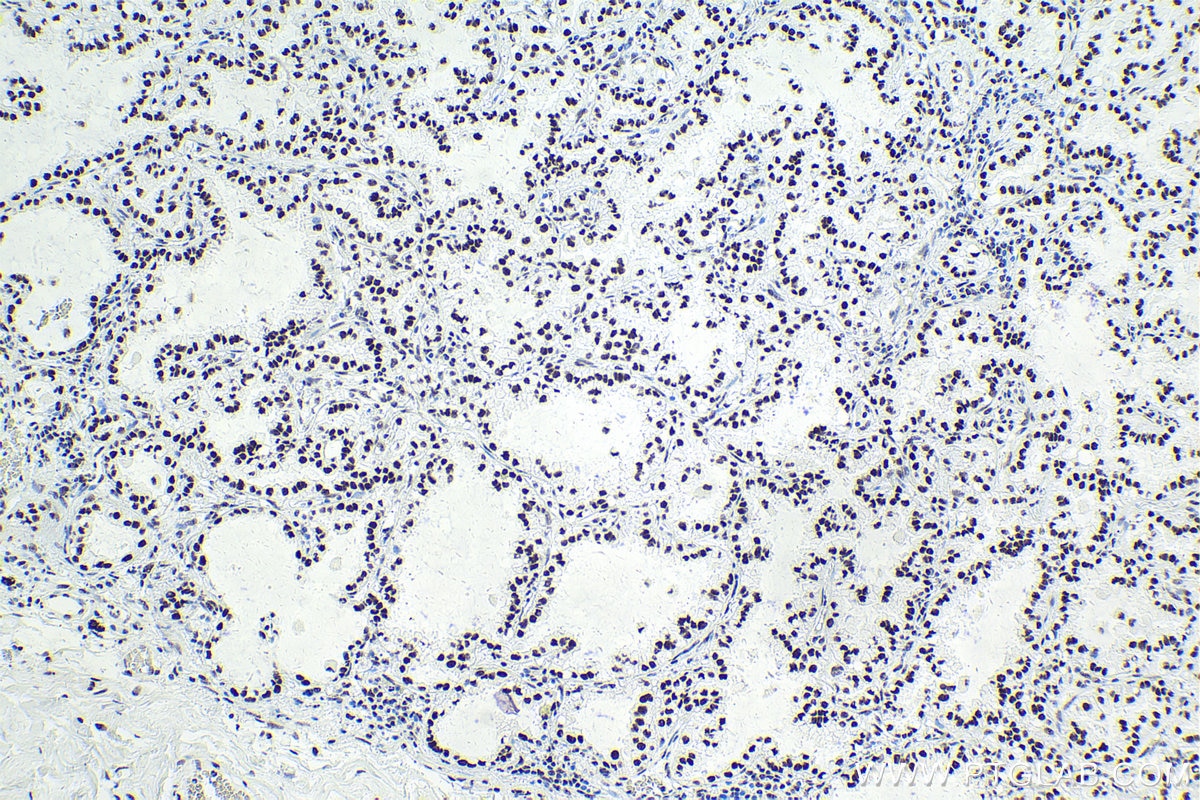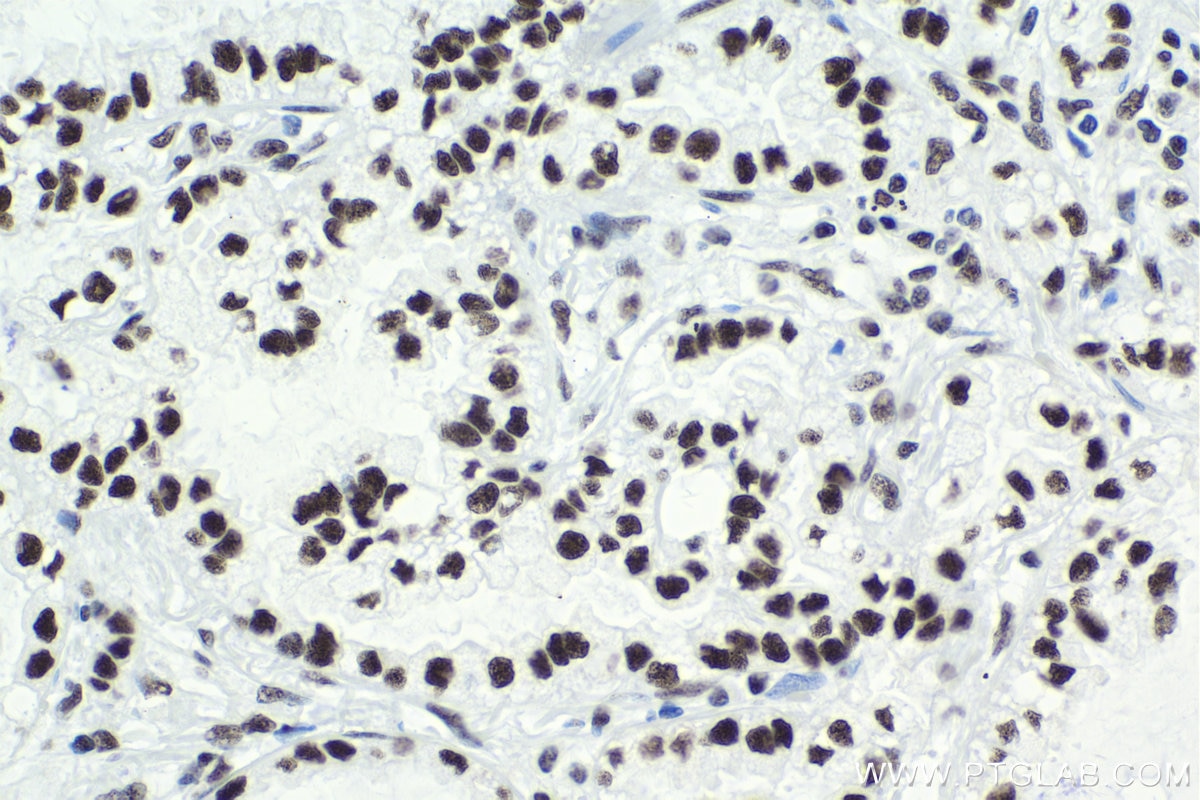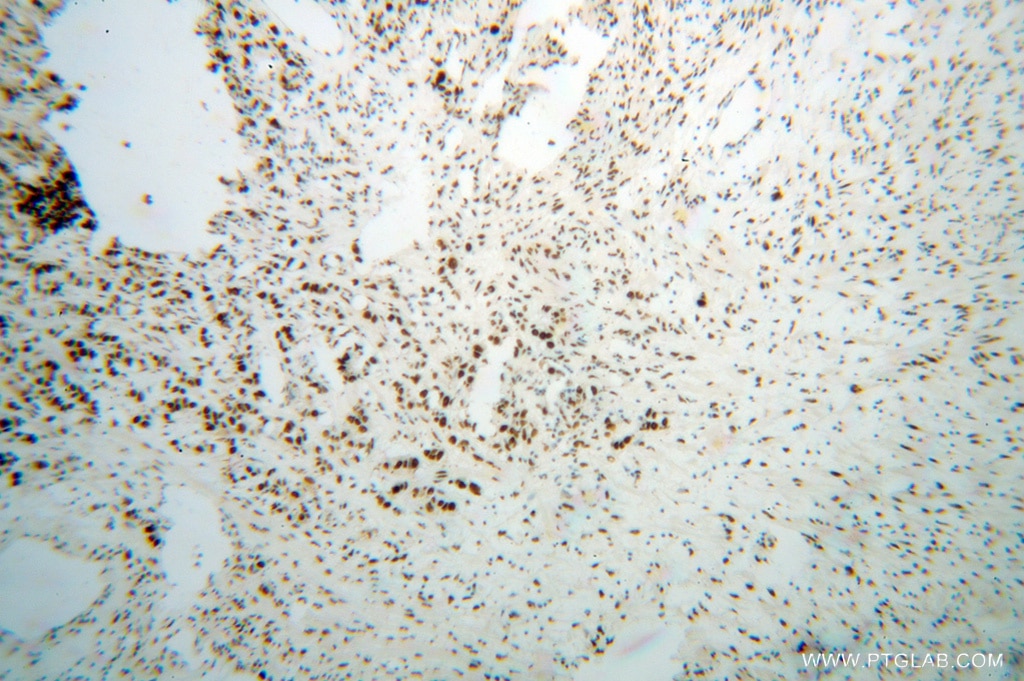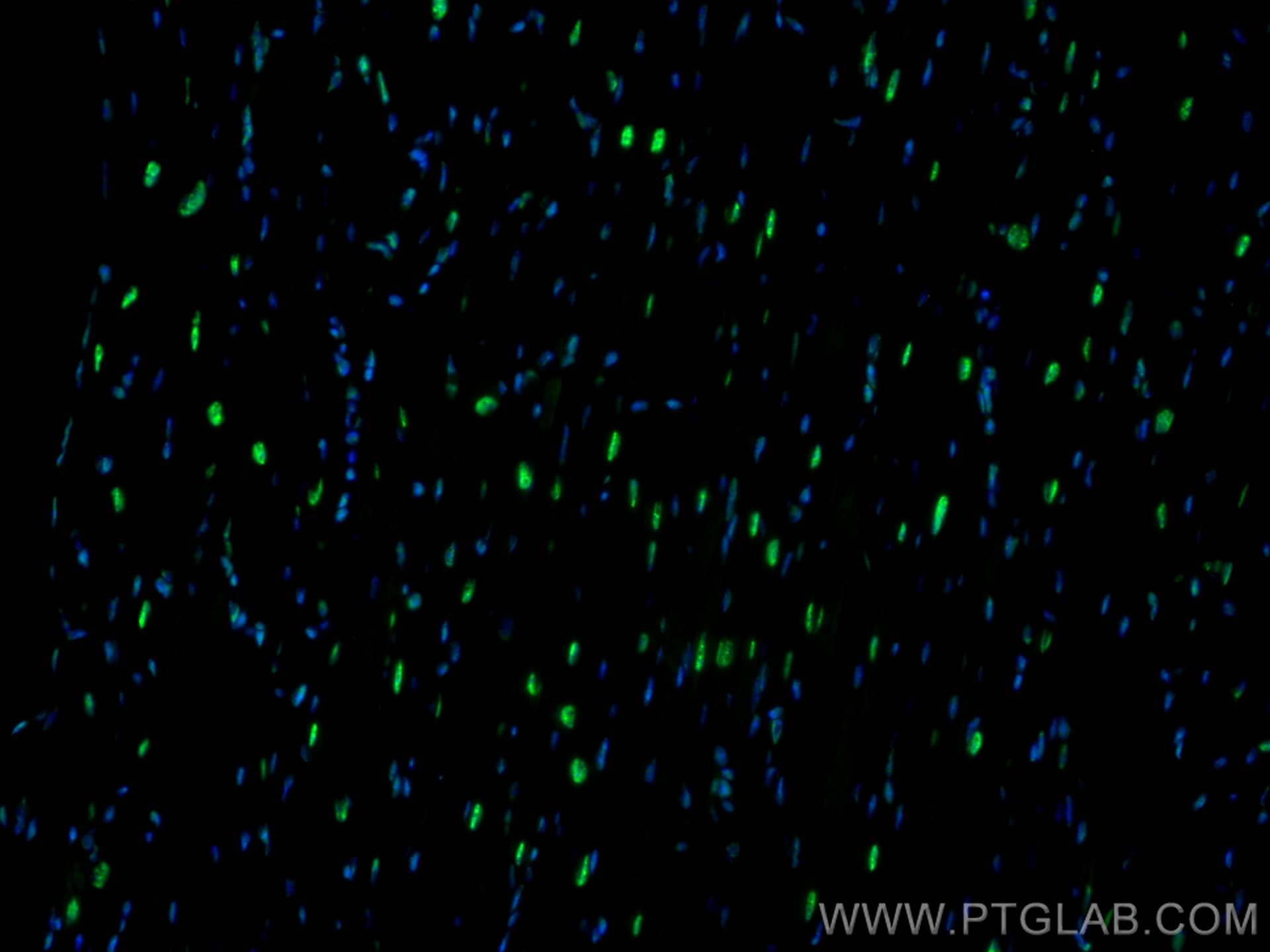SF3B3 Polyklonaler Antikörper
SF3B3 Polyklonal Antikörper für WB, IHC, IF/ICC, IF-P, IP, ELISA
Wirt / Isotyp
Kaninchen / IgG
Getestete Reaktivität
human, Maus, Ratte und mehr (1)
Anwendung
WB, IHC, IF/ICC, IF-P, IP, CoIP, RIP, ELISA
Konjugation
Unkonjugiert
Kat-Nr. : 14577-1-AP
Synonyme
Geprüfte Anwendungen
| Erfolgreiche Detektion in WB | Jurkat-Zellen, HeLa-Zellen, humanes Hirngewebe, Mausherzgewebe, Rattenhirngewebe, Rattenherzgewebe |
| Erfolgreiche IP | Rattenhirngewebe |
| Erfolgreiche Detektion in IHC | humanes Lungenkarzinomgewebe, humanes Gliomgewebe, Rattenhirngewebe Hinweis: Antigendemaskierung mit TE-Puffer pH 9,0 empfohlen. (*) Wahlweise kann die Antigendemaskierung auch mit Citratpuffer pH 6,0 erfolgen. |
| Erfolgreiche Detektion in IF-P | Mausherzgewebe |
| Erfolgreiche Detektion in IF/ICC | HeLa-Zellen |
Empfohlene Verdünnung
| Anwendung | Verdünnung |
|---|---|
| Western Blot (WB) | WB : 1:2000-1:12000 |
| Immunpräzipitation (IP) | IP : 0.5-4.0 ug for 1.0-3.0 mg of total protein lysate |
| Immunhistochemie (IHC) | IHC : 1:2000-1:8000 |
| Immunfluoreszenz (IF)-P | IF-P : 1:50-1:500 |
| Immunfluoreszenz (IF)/ICC | IF/ICC : 1:20-1:200 |
| It is recommended that this reagent should be titrated in each testing system to obtain optimal results. | |
| Sample-dependent, check data in validation data gallery | |
Veröffentlichte Anwendungen
| WB | See 18 publications below |
| IF | See 2 publications below |
| CoIP | See 1 publications below |
| RIP | See 1 publications below |
Produktinformation
14577-1-AP bindet in WB, IHC, IF/ICC, IF-P, IP, CoIP, RIP, ELISA SF3B3 und zeigt Reaktivität mit human, Maus, Ratten
| Getestete Reaktivität | human, Maus, Ratte |
| In Publikationen genannte Reaktivität | human, Hausschwein, Maus, Ratte |
| Wirt / Isotyp | Kaninchen / IgG |
| Klonalität | Polyklonal |
| Typ | Antikörper |
| Immunogen | SF3B3 fusion protein Ag5980 |
| Vollständiger Name | splicing factor 3b, subunit 3, 130kDa |
| Berechnetes Molekulargewicht | 136 kDa |
| Beobachtetes Molekulargewicht | 130-135 kDa |
| GenBank-Zugangsnummer | BC003146 |
| Gene symbol | SF3B3 |
| Gene ID (NCBI) | 23450 |
| Konjugation | Unkonjugiert |
| Form | Liquid |
| Reinigungsmethode | Antigen-Affinitätsreinigung |
| Lagerungspuffer | PBS with 0.02% sodium azide and 50% glycerol |
| Lagerungsbedingungen | Bei -20°C lagern. Nach dem Versand ein Jahr lang stabil Aliquotieren ist bei -20oC Lagerung nicht notwendig. 20ul Größen enthalten 0,1% BSA. |
Hintergrundinformationen
Introns are removed from nuclear pre-mRNA in 2-step transesterification reactions. Splicing occured in a large ribonucleoprotein particle, called the spliceosome. Spliceosomal intermediate complexes form on pre-mRNA in the order E, A, B, and C, with the catalytic reactions occurring in complex C. U2 small nuclear ribonucleoproteins are one of the proteins essential for spliceosome assembly and mRNA splicing. Functional U2 snRNP is composed of a 12S unit and 2 splicing factors, SF3A, which is composed of 3 proteins, and SF3B, which conposed of 4 proteins. SF3B3 is one of SF3B, and it's required for 'A' complex assembly formed by the stable binding of U2 snRNP to the brachpoint sequence(BPS) in pre-mRNA.
Protokolle
| PRODUKTSPEZIFISCHE PROTOKOLLE | |
|---|---|
| WB protocol for SF3B3 antibody 14577-1-AP | Protokoll herunterladen |
| IHC protocol for SF3B3 antibody 14577-1-AP | Protokoll herunterladenl |
| IF protocol for SF3B3 antibody 14577-1-AP | Protokoll herunterladen |
| IP protocol for SF3B3 antibody 14577-1-AP | Protokoll herunterladen |
| STANDARD-PROTOKOLLE | |
|---|---|
| Klicken Sie hier, um unsere Standardprotokolle anzuzeigen |
Publikationen
| Species | Application | Title |
|---|---|---|
Gastroenterology Enterotoxigenic Bacteroides fragilis promotes intestinal inflammation and malignancy by inhibiting exosomes-packaged miR-149-3p. | ||
Nat Commun Splicing modulators act at the branch point adenosine binding pocket defined by the PHF5A-SF3b complex. | ||
Nucleic Acids Res Corrigendum to article "Quantitative proteomics reveals that long non-coding RNA MALAT1 interacts with DBC1 to regulate p53 acetylation''. | ||
Mol Neurodegener Nuclear speckle specific hnRNP D-like prevents age- and AD-related cognitive decline by modulating RNA splicing. | ||
Nucleic Acids Res Quantitative proteomics reveals that long non-coding RNA MALAT1 interacts with DBC1 to regulate p53 acetylation. |


